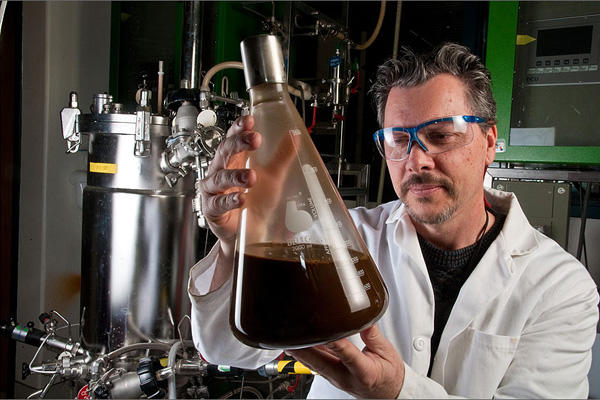Alcohol fuels have been around for years, typically mixed with gasoline in a blend also known as gasohol. E10, with a ratio of 10 percent gasoline to 90 percent ethanol, can be used in any ICE, and many oil companies already blend their fuels that way. Methanol, mostly used in race cars, isn't popular for other vehicles because it isn't as clean and it also relies on fossil fuels. The use of these fuels in higher proportions requires modification to the fuel storage and delivery systems on cars and trucks. E85, a mixture of 85 percent ethanol to 15 percent gasoline, can be used in flex-fuel vehicles, and car enthusiasts have modified their vehicles to run on ethanol or methanol alone, with mixed results. One point that's commonly overlooked is that alcohol is about half asenergy-dense as gasoline, so you can only go half as far on a tank.
Eco-Logic: Because ethanol is biodegradable, nontoxic, and dissolves in water, E85 has been praised by the U.S. Department of Energy (DOE) as producing emissions that contain less carbon dioxide and carbon monoxide than emissions from vehicles that run on gasoline or diesel oil. As the supply of gasoline diminishes, the current E85 standards that require the mix to contain 15 percent gasoline are being challenged to allow a greater proportion of ethanol.
The major controversy concerning ethanol fuel concerns the sources used to produce it. Corn-based ethanol has disastrous effects on the price and availability of corn for food and other products. It also doesn't produce as much energy as gasoline and requires fossil-fuels to grow, refine, and deliver it. Happily, cellulosic ethanol does not have those drawbacks. Because it is derived from the cellulose found in non-food agricultural and waste products such as switch grass — a fast-growing plant that has a high yield of energy and requires little in the way of fertilization and other high-energy production costs — old newspapers, and other substances, it can compete with gasoline for fuel efficiency and not affect the price and supply of grains and other vegetation vital to humans and livestock.
Car Smarts: Although vehicles can run on pure alcohol, the addition of gasoline is usually justified because it helps with ignition in cold weather, and if the fuel catches fire, it burns with a visible, colored flame.
Tip: You can find out more about ethanol and whether your vehicle can run on E85 at www.e85fuel.com. To find E85 in your area, go to the "How to findalternative fuels" sidebar.
From Auto Repair for Dummies, copyright © 2009 by Wiley Publishing, Inc., Indianapolis, Indiana. Used by arrangement with John Wiley & Sons, Inc.










